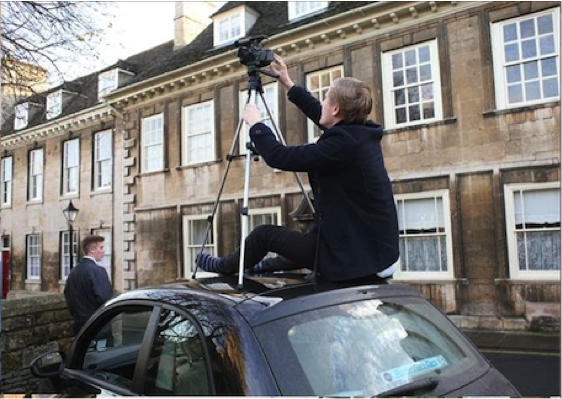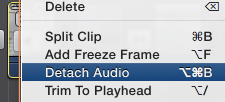There are many different sub-genres of thrillers that include action, conspiracy, crime, and disaster etcetera. As a group we decided to choose crime/conspiracy as our feedback from our target audience told us this was the second most popular thriller genre. We designed our thriller to be set in a dystopian past in which the audience would have our take and an insight into how the world would be different if Germany had the won the Second World War. We wanted them to feel involved in this dystopian world as much as possible and chose to include perspectives from both first person killer and victim; in addition we used shots that would overview this comparatively. To make these ideas that we had really stand out we had to ensure what could be filmed respectively to the time period, was done so.
For different
sections in the scene we used different shot types and typical thriller
conventions to emphasise the action. A common theme throughout our thriller was
the use of cutaway shots. We placed them at intervals to emphasise certain
objects, such as the killer’s boots and leather gloves, and so that the
audience notices key objects perhaps more than the victim does. We also
encompassed high-angle shots including one on top of the victim’s car targeting
him, as this hints to the viewer that he is in fact the vulnerable one in this
scene. Vital types of camera shots we used were point-of-view, as mentioned,
from the killer and the victim. However we used them both differently to create
alternate effects. The killer’s point of view was essential before the ‘strangulation’
scene to impose on the audience a sense of what is to come whilst still
remaining mysterious. It is only when the killer strikes that we see the
victim’s point of view. This puts the viewer in his shoes and shows first-hand
what his reactions are.
In order
to build upon and maintain tension and panic throughout the strangulation scene
we needed to use a series of shot types and fast-cut editing. The Bourne
Identity was a major inspiration here as a typical action and mystery thriller.
We took our victim and killer and positioned them in a confined space where it
appears (rightly so) that the victim would have less chance of escaping the
attack. We filmed numerous different shot types that we were able to use for
short periods of time, for example one second and placed them sequentially in
our editing timeline to create and sustain panic, suspense and tension
continuously throughout the strangulation scene. Furthermore we chose rather
than to slowly build tension earlier on in the scene to instead promptly start
the action. The effect of this on the audience is that they do not see it
coming and so there is more an element of surprise.
In terms
of props for our film we used very little but in an effective manner. We used
car keys as mentioned previously to queue the second soundtrack of the film,
but they also serve to distract the audience from the gun in the compartment
below the steering wheel of the car. This leads on to our second prop the 1952
Morris Traveller that actually serves more of a setting for the film. The car
fits the time period of the film (1956); however being this old it means there
is no alarm fitted, which offers no real chance for the victim to alert someone
when being attacked. Inside the car we have the murder weapon that is a thick
orange rope. We chose this as it is something likely to already be in the car,
hence the audience does not know whether the attack was planned. We decided
upon the colour orange because we wanted it to resonate in the viewer’s minds
and, as it almost resembles blood. In addition it is an unlikely weapon of
choice for the killer and so adds more mystery.
We also planned to use the
long length rope to create a continuous shot following the rope back
into the boot of the car, where our title sequence was filmed. This is a rare
technique found in films but when filmed correctly it does pay off, Hanna is a
prime example of this. Hanna’s father is confronted by a group of men when he
is walking down onto a subway platform, of which he ‘deals’ with. To film ours
we begun by designing a French newspaper called Le Monde (also the title of the
film), we used this to place images of each person in the group so that it
looked like normal newspaper articles. We then filmed a continuous shot
following the orange rope from the front to the boot of the car, where the
newspaper was laid. This was not an easy task, as one person cannot reach all
through the car to film this shot. In order to overcome this we passed the
camera between two people, beginning with person 1 to person 2 and then back to
person 1 again. When filming this we
used close-up shots to film snippets of newspaper combined with the images with
us. In the editing process all we had to do now was add the text and freeze-frame
each close-up. The font style we chose to use was American Typewriter because
it has a classic look to it but it is still clear to read.

























